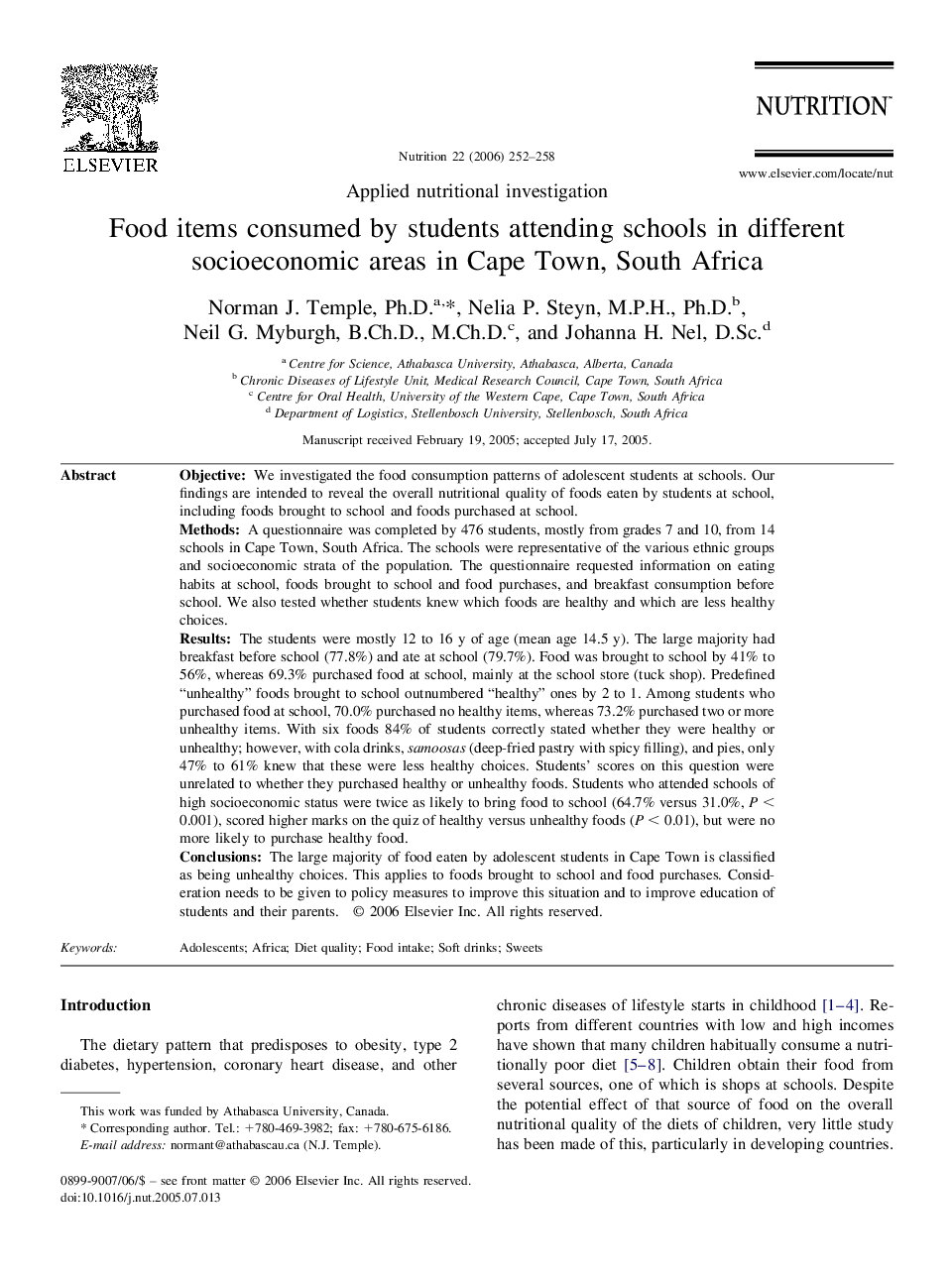| کد مقاله | کد نشریه | سال انتشار | مقاله انگلیسی | نسخه تمام متن |
|---|---|---|---|---|
| 3277730 | 1208633 | 2006 | 7 صفحه PDF | دانلود رایگان |

ObjectiveWe investigated the food consumption patterns of adolescent students at schools. Our findings are intended to reveal the overall nutritional quality of foods eaten by students at school, including foods brought to school and foods purchased at school.MethodsA questionnaire was completed by 476 students, mostly from grades 7 and 10, from 14 schools in Cape Town, South Africa. The schools were representative of the various ethnic groups and socioeconomic strata of the population. The questionnaire requested information on eating habits at school, foods brought to school and food purchases, and breakfast consumption before school. We also tested whether students knew which foods are healthy and which are less healthy choices.ResultsThe students were mostly 12 to 16 y of age (mean age 14.5 y). The large majority had breakfast before school (77.8%) and ate at school (79.7%). Food was brought to school by 41% to 56%, whereas 69.3% purchased food at school, mainly at the school store (tuck shop). Predefined “unhealthy” foods brought to school outnumbered “healthy” ones by 2 to 1. Among students who purchased food at school, 70.0% purchased no healthy items, whereas 73.2% purchased two or more unhealthy items. With six foods 84% of students correctly stated whether they were healthy or unhealthy; however, with cola drinks, samoosas (deep-fried pastry with spicy filling), and pies, only 47% to 61% knew that these were less healthy choices. Students’ scores on this question were unrelated to whether they purchased healthy or unhealthy foods. Students who attended schools of high socioeconomic status were twice as likely to bring food to school (64.7% versus 31.0%, P < 0.001), scored higher marks on the quiz of healthy versus unhealthy foods (P < 0.01), but were no more likely to purchase healthy food.ConclusionsThe large majority of food eaten by adolescent students in Cape Town is classified as being unhealthy choices. This applies to foods brought to school and food purchases. Consideration needs to be given to policy measures to improve this situation and to improve education of students and their parents.
Journal: Nutrition - Volume 22, Issue 3, March 2006, Pages 252–258